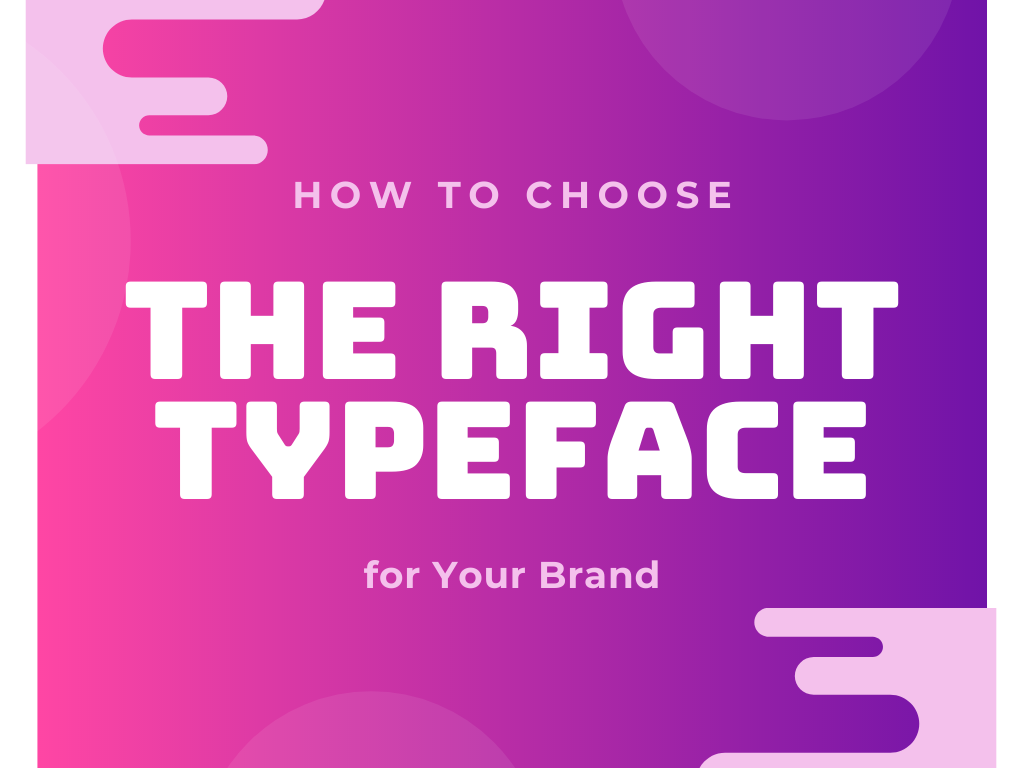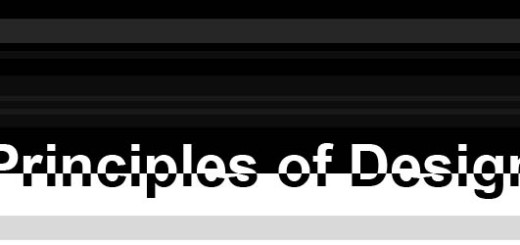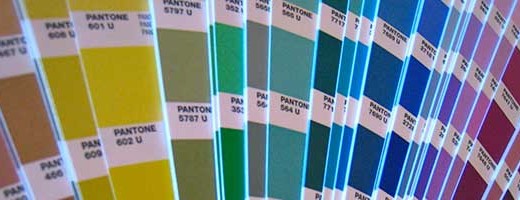How to Choose the Right Typeface for Your Brand
0A typeface is the design of a single set of characters, unified by consistent visual properties. The typeface includes letters, numbers, symbols, signs, punctuation marks and accent or diacritical marks.
These are terms that people use interchangeably all the time. Using the word typeface can mean font and vice versa, but they’re not the same thing.
So, let’s take a look at this example so that you can understand better what I mean between typeface and font.
 Here is an easy way to remember the difference between typeface and fonts. Think of the typeface like a music album. So, in this instance, the album would be called Typeface, then on the back, what we would have would be the track listing, and whose would be the fonts and fonts make up the album or the typeface.
Here is an easy way to remember the difference between typeface and fonts. Think of the typeface like a music album. So, in this instance, the album would be called Typeface, then on the back, what we would have would be the track listing, and whose would be the fonts and fonts make up the album or the typeface.
Importance of Typography
The typography is the basis of all design. Choosing the right typeface to create a corporate identity or image such as the logo, writing a booklet or a book, makes the difference between winning a customer or scaring it.
In addition, it is a very important factor to get the attention of the public and promote yourself, so that the font you choose must adapt to its communicative function.
There are different typographical categories among which the most common stand out: Serif, Sans Serif, Handwritten, Decorative and Symbols. All of them have certain characteristics in terms of the anatomy of the source and design of the body, its size, thickness and relationship between characters; elements that allow generating numerous effects in the text.
Depending on the type of letters used, one sensation or another will be transmitted. The structural composition of a typographic family can contribute to the perception of seriousness, elegance, joy, informality … Characteristics that can be played depending on the message and the audience it is aimed at.
Most Popular Fonts Libraries
As we all know that choosing a popular font has its own benefits. It is advisable to have an extensive library of fonts to be able to try all possible fonts and find the one that best suits the circumstances. Today there are many websites specialized in typographies that offer designs for all tastes, from the most common models (Helvetica, Calibri, Arial, Times New Roman …) to more fancy ones, among which the sources with which they are. They have designed the logos of well-known films or musical albums.
Before choosing a typeface or another, it is advisable to write the same word with different models to see which one is better or more suited to the idea that you want to convey and represent.
Typography is a very important variable to consider for the brand image. Together with the color and composition, the type of font or typographic fonts were chosen will be key when transmitting the values and personality of your business. In the following, we present some tips that can help you choose the best typeface for your brand.
How to Choose the Best Typeface
Think that if you create a logo that represents your brand. It should be above passing fashions and endure the passage of time without losing an apex of effectiveness. A clear example is in the IBM logo : since Paul Rand (for those who don’t know him, one of the masters of graphic design) created it in the 70s of the last century, the technology company logo has survived the passage of time and is now an icon, well recognizable and perfectly represents IBM.
It’s not about your goal is to make your logo an icon, because that category can only be given over the years. But you should keep in mind that the typeface you choose should be clear and simple, and define your brand.
Runaway from passing fads and differentiate yourself from the rest. Right now, the design trend is the lines with vintage touches, but what assures you that in a few years they will remain in the front line?
Unless they fit in well with your project, opt for more classic and timeless sources. In the digital environment, you have plenty of resources to make an appropriate selection.
Find a Readable Typeface
This is basic. If your logo does not read clearly it can harm you as a brand. Think that in addition, the typeface you choose have a design to reproduce in different media and sizes. If you opt for a font with too many ornaments, it may not be readable.
Remember: less is more, and clarity and simplicity is not at odds with creativity. It is important to also consider the space between characters.
A typography with very little space between characters would negatively influence that readability we have been advising. It is not about using letters with a lot of space between characters, but about finding a balance between full and empty.
Typographical Fonts and Their Connotations
In addition to the general characteristics of typography, it is worth doing a review of some types of letters and what they can tell you. The meanings traditionally associated with each type of typography can help you in your choice of it.
Serif Fonts
They are the most traditional typefaces. The Times New Roman, the Bodoni or the Garamond are examples of serif sources. Traditionally they represent aspects such as tranquility, seriousness, dignity or firmness.
Sans Serif Fonts
With a more modern look, the letters sans serif is characterized by not having finials at their ends. You can also call them dry stick fonts.
They can represent modernity, sobriety and cleanliness or security. Examples of these types of sources are Helvetica, Arial or Verdana.
There are many sans-serif fonts are available out there but no font can beat the appearance of Avenir font on the web. Avenir which means “future” in French – was designed by Adrian Frutiger in 1988 and distributed by Linotype. It is a geometric sans-serif full of delicious optical adjustments. It has been used in number of designs on the web.
Calligraphic Fonts or Script
They look italic or handwritten fonts. They usually represent elegance and have a human touch, a warm and cozy look. Each calligraphic font has its own appearance.
Script fonts are stylish and mostly used by graphic designers who are working on photography or fashion design projects.
Display Fonts
Normally used in large posters, display or display sources usually give greater personality. They are thick, with a lot of visual impacts, and some of the best-known designs comes in the technology industry.
Understanding Your Brand Personality
Have you ever wondered what can fail in your business?
Today we are living in a world in which letters and typography are fundamental to make your business stand out against your competitor, and that is the typography (in short, the typeface) used in your logo, your corporate material, your presentations, and all your acts is essential to provide a unified and well-defined corporate image with which to convey certain values that will be the fundamental guide of the present and future of the company.
Therefore, we start working to help you choose the font of your company or business. Describing some of the most commonly used fonts depending on the specific sector of activity of your company.
Things to Consider Before Choosing a Font for Your Brand
Now that you know the different categories of sources, you can make a more informed decision. On the other hand, it is not only your preference, but you must also take into account your target audience and the spirit of your company in your decision, to find the source that best suits your business.
Target Audiences
To make positive you select the simplest font for your brand, think about who is the target audience of your company? The type of person you are talking about is very important when it comes to making the choice of the source. You will surely choose a different source if it is a toy store than if it is a law firm since these two companies do not target the same public.
Business Type
In addition to your target audience, the source you choose should represent your business. It must fit perfectly in the identity of your brand. The source must be consistent with your type of business and the values you wish to convey. Do you want to look dynamic, professional or fun? Are you a great fancy restaurant or the local canteen? All this will have a great impact on the choice of its source.
Combine Sources
Sometimes, selecting one font for your brand is good. In alternative cases, two fonts will be enough to build your ideal logo. If you have to combine two sources, one will be the main source, another will be more secondary. To absolutely mix your fonts, try not to choose them too similar.
Contrast is the key to a good typographic combination. You can go more conservative, combining a serif and sans-serif font or choose a more daring style, combining two completely different decorative fonts. No matter what path you are taking, certify you have got an honest distinction and use sources that area unit complementary.
Conclusions
There are several aspects with which every designer has a constant struggle when making their projects. One of them is to find the right typography, knowing how to choose the appropriate one for a specific job takes time to study.
But like every designer, not always the time invested in finding the right one fits the desires of the order. So not only do you have to make a choice of the right typeface. But also adapt it to the tastes of the person in charge of the job.
The choice of typography is essential to do a good job, in this way, it becomes an art that must be mastered.




